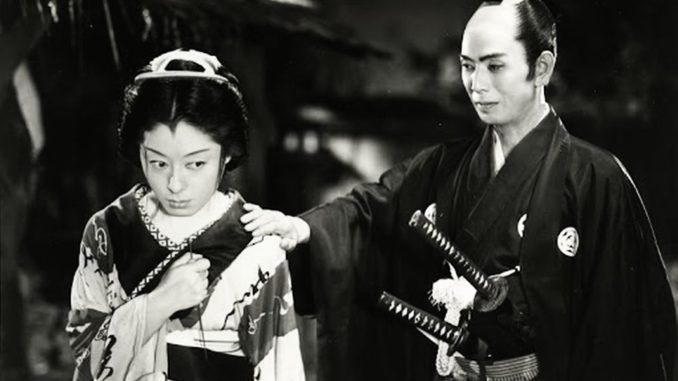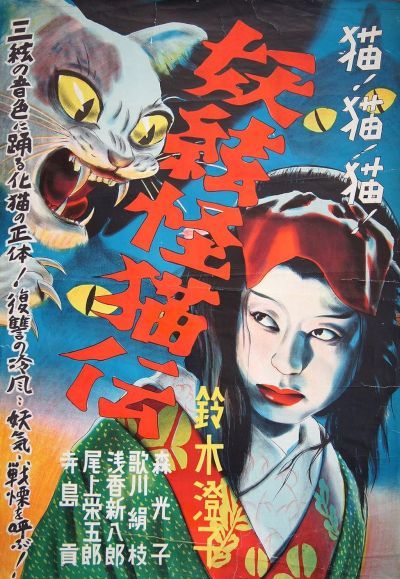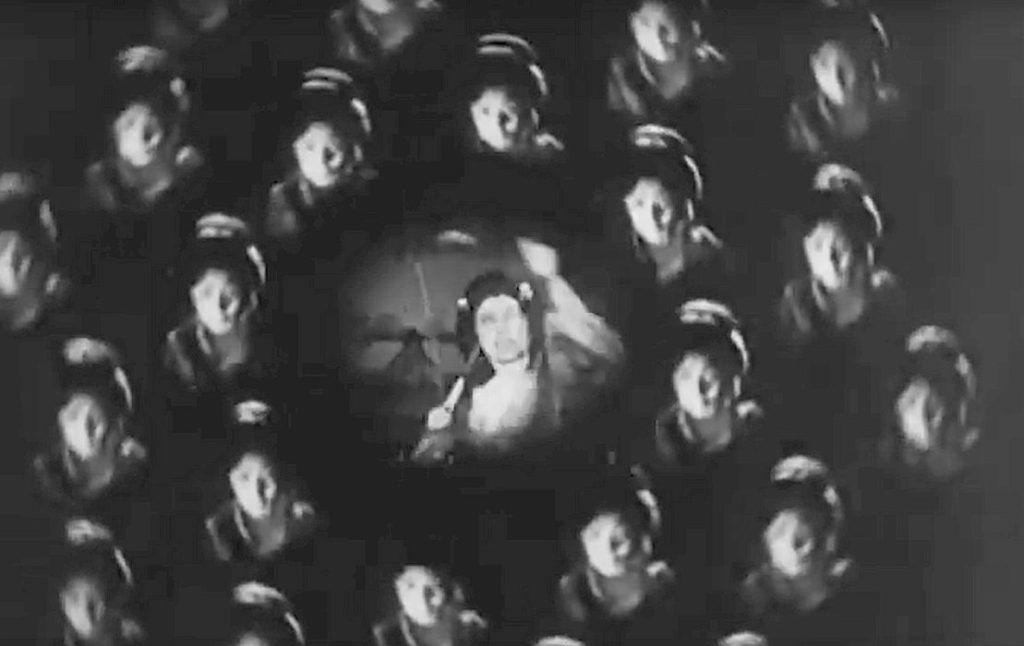
Rating: D+
Dir: Kiyohiko Ushihara
Star: Sumiko Suzuki, Shinpachirô Asaka, Kinue Utagawa, Mitsuko Mori
a.k.a. Kaibyô nazo no shamisen
After a few years with a number of solid contenders, we’re back into a year almost entirely bereft of horror. It’s like the world was busy preparing for an extended spell of real-life fear and loathing, dwarfing anything the silver screen could manage. The count is all the way down to seven horror films in the IMDb for the year, beating the previous low of nine set in 1950. And seven’s a stretch, since two of them are effectively the first and second half of one feature. Horror is also pushing the definition here. Highest rated and with most votes is Abel Gance’s J’Accuse. But it’s more like a anti-war drama, until the final ten minutes, when a veteran asks his dead colleagues to rise from the grave in protest at militaristic events. Didn’t help much, did it?
Then we have The Patient in Room 18 and The Black Doll, both of which are whodunnits. The former sees private eye Lance O’Leary sent to a sanitorium, where a fellow patient is murdered and $100,000 of radium stolen. While not horror, I learned two things: there was a time where strapping radioactive material to a patient’s chest was considered treatment, and radium was very expensive – that’d be about two and a quarter million dollars now. The Black Doll is not dissimilar: in both movies, we get a corpse falling out of a closet, and it ends with one of those get-togethers where the detective explains the case and says, “The killer is in this room!” Doll leans more towards comedy, in particular with a bumbling policeman.
 There’s also The King Kong That Appeared in Edo, the two-parter mentioned, made by Zenshō Cinema in Japan. This now appears a lost film, though by most accounts you’re not missing much. Zenshō were so poor, they couldn’t afford sound, even into the forties. The size of the primate is also unclear. Stills suggest something normal sized, but promo content suggests otherwise. It’s possible it may have changed size of the course of the film, offering an interesting precursor to the post-war kaiju movies. However, since it appears all prints of the movie were destroyed during the war, we’ll likely never know, and it’s no more than an intriguing aside for the purposes of this project.
There’s also The King Kong That Appeared in Edo, the two-parter mentioned, made by Zenshō Cinema in Japan. This now appears a lost film, though by most accounts you’re not missing much. Zenshō were so poor, they couldn’t afford sound, even into the forties. The size of the primate is also unclear. Stills suggest something normal sized, but promo content suggests otherwise. It’s possible it may have changed size of the course of the film, offering an interesting precursor to the post-war kaiju movies. However, since it appears all prints of the movie were destroyed during the war, we’ll likely never know, and it’s no more than an intriguing aside for the purposes of this project.
I was wondering whether I’d end up writing about J’Accuse, when I watched Ghost Cat, and fell upon it like a man in the desert on a 48-oz. Thirstbuster: good enough for the job, and you’re not going to complain if it’s grape Shasta. It, too, was considered lost for decades, before showing up unexpectedly around 2011 – it still has only 126 IMDb ratings. Director Ushihara supposedly went to Hollywood in the twenties and worked under Charlie Chaplin for a year, though safe to say you couldn’t tell from this. Instead, it is an entry in the “ghost cat” genre of Japanese horror known as Kaibyō; big at the time, and intermittently since Cinematically, the field began with 1910’s Saga no yozakura (Night-Blossoms of Saga), in which a cat develops a lust for vengeance, after drinking the blood of someone who committed suicide.
Though that first movie was based on an 1853 kabuki play, so its origins go back further than cinema. Ghost Cat could also be part of the “Jealous Japanese women be kray-kray” genre. That’s one of which I have personal experience, but let’s say no more about that, and move on quickly to the plot here, shall we? Seijiro (Asaka) is a humble player for a theatrical troupe of the samisen – a traditional three-stringed Japanese instrument. You will be hearing a lot of it here, so I hope you like it. His other half is Mitsue, played by Suzuki, the woman who could be called Japan’s first scream queen. Though she more often played the ‘monster’, making her name in the horror genre before retiring from cinema at age thirty-six.
Mitsue will brook no rivals for Seijiro’s affections, and so is thoroughly unimpressed when he starts giving lessons to Okiyo (Utagawa). The first victim is Okiyo’s cat; then, when she doesn’t take the hint, Okiyo herself, dumping her shamisen in a local river. But all of them return to some degree, the instrument ending up with Okiyo’s sister, Onui (Mori). It’s about here the weird and horror elements start to ramp up, building towards a performance of a play starring Mitsue, which goes wrong in a way that would have the Phantom of the Opera nodding in approval.
 That the film survived at all is a blessing, but time has not done it any favours, with the print not in the best of condition, and the audio track particularly rough. Mind you, given sound had been a thing in Japanese cinema for less than a decade at this point; it was never exactly Dolby Atmos. Good enough to get the point across is how it can be described. I do think, the story drags badly in the middle, from the time where the basic idea is established, through to when you realize this theatrical experience is going to deliver an unexpected twist. Ushihara then dials up the style meter, with some disconcerting visuals (above) which prove surprisingly effective.
That the film survived at all is a blessing, but time has not done it any favours, with the print not in the best of condition, and the audio track particularly rough. Mind you, given sound had been a thing in Japanese cinema for less than a decade at this point; it was never exactly Dolby Atmos. Good enough to get the point across is how it can be described. I do think, the story drags badly in the middle, from the time where the basic idea is established, through to when you realize this theatrical experience is going to deliver an unexpected twist. Ushihara then dials up the style meter, with some disconcerting visuals (above) which prove surprisingly effective.
My main takeaway might be, I have not exactly been converted into a fan of the shamisen by this film. Call me an uncultured idiot, but it sounds like a broken and out of tune guitar, being attacked by a toddler. Hey, I don’t like bagpipes either. What can I say? Overall, there are some interesting ideas, and I can see why Suzuki became an icon. However, I found myself repeatedly thinking, “I wonder what a remake of this by Takashi Miike would be like?” Even allowing for the era, it feels particularly… understated, if you’re feeling charitable, or tame, if you want to be brutal. I could likely have done with rather more ghost cat, and considerably less mysterious shamisen.
This article is part of our October 2025 feature, 31 Days of Vintage Horror.
